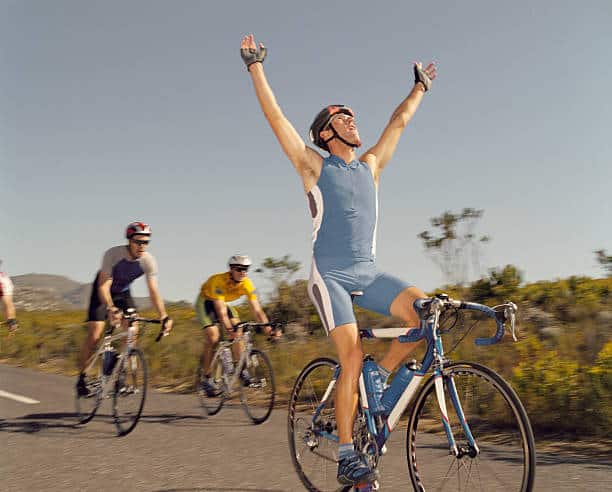If you want to develop your cycling endurance, you can start by shifting into higher gears and increasing your pedaling rate. This doesnt mean that you should start by shifting into higher gears right away, but that you should gradually spend more time in a higher gear than you would otherwise while progressing simultaneously. By doing this, your endurance will have increased significantly after a while. You will notice when you feel more comfortable with the higher gear, and your speed will have increased considerably by developing a faster pedal stroke. You can train on your home bike by pedaling with one leg while resting the other leg, then with both, then training the other leg. Do this for a few sets, and your pedaling mechanics will be improved.
Table of Contents
Ride a hill
An excellent way to improve your muscular endurance is to ride a hill or, on a home bike, to imitate the experience. Hill climbing means you can pedal at a moderate pace at high speeds for an extended period. Pedaling strength can be increased this way, as cyclists tend to reduce the pedaling rate. Your distance should increase until you can simultaneously cover a greater distance. You can do short sprint intervals that mimic steep slopes with high intensity, with intervals of recuperation in between, like in a downhill run. You can also try to mimic the experience of driving outdoors in headwinds, with recovery intervals in between. Acceleration training is also quite adequate, as you play with your regular and higher speed, increasing the number of accelerations per trip as you ride.
Block training
Block training is also a way to increase power, speed, and endurance. This means you should do tough workouts for a few days, then use an equal number of recovery days. This doesnt mean you should take days off; instead, you can opt for easy workouts. By facilitating the process of physical adaptation using block training and recovery periods, you will enhance your power.
The 75% rule
Another way to increase power, speed, and endurance is the 75% rule. This rule states that at least 75% of your time, or kilometers, must be less than 75% of your maximum heart rate. This means that three-quarters of your training must occur in Zone 1 and Zone 2 of the FTP, allowing you to recover and build your endurance easily. The remaining percentage of your weekly mileage should be done in the intense Zone 5 of riding. Your physiology will change with the short but very intense riding versus adequate recovery and endurance work.
You can do a few sessions of interval pedaling to improve your neuromuscular coordination, which increases your pedaling rate. This workout begins with a low speed, below your lactation threshold, pedaling at 100-110 rpm. Do intervals by increasing the duration of the effort until you reach 3×15 minutes with a recovery of 5 minutes.
Longer cycling sessions
Also, work on your endurance working on your pedaling power. Do longer cycling sessions, improving your aerobic and muscular endurance. This doesnt mean you have to exceed your limit every day or every week because it doesnt mean you have to overexert yourself. You need to ease your physiological adaptation process by stressing your muscular and cardiovascular system, but dont go too far. All you need to do is extend your ride or roll a little for a significant impact.
Change your cadence
Another way to improve your endurance is to change your cadence and speed patterns, going beyond what your body is used to. Change your intervals, speeds, and cadence or, for another significant effect, break through one of your barriers in terms of time, resistance, distance, speed, schedule, etc.
Fartlek training, which means speed game in Swedish, is a method in which you play with your speed at unorganized intervals. The workout occurs primarily in your comfortable endurance zone, but your aerobic and anaerobic systems can be strained due to the varying intensity of your cycling.
Choose the right wheels.
Speed can also be increased by the wheels you choose, so compare the wheels available for full-speed training, as the change can be dramatic. On the other hand, you may want to be as aerobic as possible; tight clothing is a must to gain speed when riding outdoors, so make sure you and your bike dont offer too much wind resistance.
Nutrition
Nutrition can also play a role, with proper hydration and nourishment before, during, and after each workout and strength training. And you should also learn how to recover and rest. This includes sleep, relaxation, and flexibility.
Keep track of your progress.
Interactive calculators are available to measure and adjust the physical parameters of your speed and power. Using them gives you a more complex picture of your progress. These objects, along with the mechanisms mentioned above, will help you get an idea of how fast you can go and how many watts you get, but dont let the obsession with speed and endurance override the importance of the ride. After all, it only helps you keep track of your progress.
Conclusion
Getting more power and going faster isnt easy. You need to train efficiently, work hard and rest accordingly, and you dont want to get demoralized on slower days. That way, you will know your power and watch how fast you need to go up.
